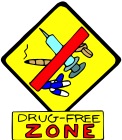ALCOHOL AND DRUG STATISTICS
Chris E. Marsh, M.Ed.
Workers using drugs or abusing alcohol file 38-50% of all workers’ compensation claims, report to work late 3 times more often than nonusers. In companies that offer benefits to employees, such as health insurance, these users consume 3 times more benefits than abstainers or very minor alcohol users. This group of employees statistically misses work completely than non-problem users and are 3.5 times more likely to be involved in an accident.

As employers are well aware of, accidents are expensive. Especially if they happen on the job. The major result is an increase in your worker’s compensation premium. As the cost of medical expense, death, or disability go up to the insurance company, so will your premium. In fact, it may go so high that you cannot pay or either become uninsurable for worker’s compensation. As a side note, OSHA even checks modifier (“mod”) rates in most industries and professions in the United States. If your mod rate goes above a certain percent, OSHA will write you a letter and put your business on a special inspection list to determine what is causing all these injuries or deaths, or disability claims. So, it is in your best interests to keep your workplace as safe as possible to reduce the possibility of your worker’s compensation premium going up. According to National Institute of Drug Abuse (NIDA), 70% of all drug users are employed. And, 17% of all workers abuse alcohol or other drugs. Do not think that your workplace is drug free without some type of program to establish that it is drug free.
Other NIDA statistics state that workers under the influence of alcohol or drugs are: (1) over 3 times more likely to injure themselves or others in a workplace accident; (2) 5 times more likely to file a worker’s compensation claim; (3) 2.5 times more likely to have absences of 8 days or more; (4) are more likely to have difficulty concentrating, more difficulty recalling instructions, or difficulty with complex assignments (and as we know, there are a multitude of ways to get hurt in a gin); (5) return from lunch or break late or report tardy on Monday morning or after a day or night off.
How does the employer recognize these abuses and potential disasters in their workplace? Just a few symptoms of alcohol and marijuana use are given here. The simplest way of detecting alcohol is the odor of alcohol on a person. People with alcohol problems also have health problems, financial problems such as borrowing money the day after payday, and legal issues along with risky behavior such as driving under the influence. Marijuana users may be detected by glassy, red eyes; loud talking; a sweet burnt scent (like burned rope), and loss of interest and motivation.
